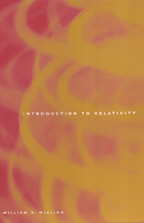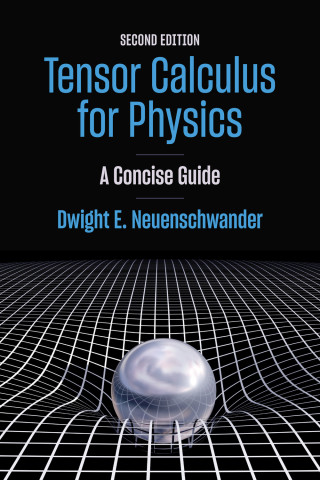Special relativity is a cornerstone of the structure of all fundamental theories, and general relativity has blossomed from Einstein's original theory into a cutting-edge applied science. Applications of Einstein's field equations describe such phenomena as supermassive black holes at the center of galaxies, the spiraling paths of binary pulsars, gravitational lensing caused by massive compact halo objects (Macho's), and the possibility of detecting gravitational waves emitted in cataclysmic cosmic events.
In Introduction to Relativity, physics teacher and researcher Bill McGlinn explains the...
Special relativity is a cornerstone of the structure of all fundamental theories, and general relativity has blossomed from Einstein's original theory into a cutting-edge applied science. Applications of Einstein's field equations describe such phenomena as supermassive black holes at the center of galaxies, the spiraling paths of binary pulsars, gravitational lensing caused by massive compact halo objects (Macho's), and the possibility of detecting gravitational waves emitted in cataclysmic cosmic events.
In Introduction to Relativity, physics teacher and researcher Bill McGlinn explains the fundamental concepts of Einstein's special and general theories of relativity. He describes the basic consequences of special relativity—length contraction and time dilation—and the enigma of the twin paradox, as well as the Doppler shift of light. Relativistic dynamics is contrasted to Newtonian dynamics, followed by a discussion of relativistic tensor fields, including those of the electromagnetic field and the energy-momentum density of fluids. After a study of Einstein's early attempt at incorporating the equivalence principle into physics, McGlinn presents the general theory of relativity, discussing the three classic tests of relativity: the deflection of light by a gravitational field; the precession of perihelia; and the gravitational redshift of light. He also discusses other important applications, such as the dynamics of orbiting gyroscopes, the properties of stellar interiors, and black holes. The book ends with a chapter on cosmology, which includes discussions of kinematics and dynamics of the famed Robertson-Walker metric, Hubble's constant, cosmological constant, and cosmic microwave background radiation.
For anyone seeking a brief, clear overview of modern general relativity which emphasizes physics over mathematics, McGlinn's Introduction to Relativity is indispensable.






